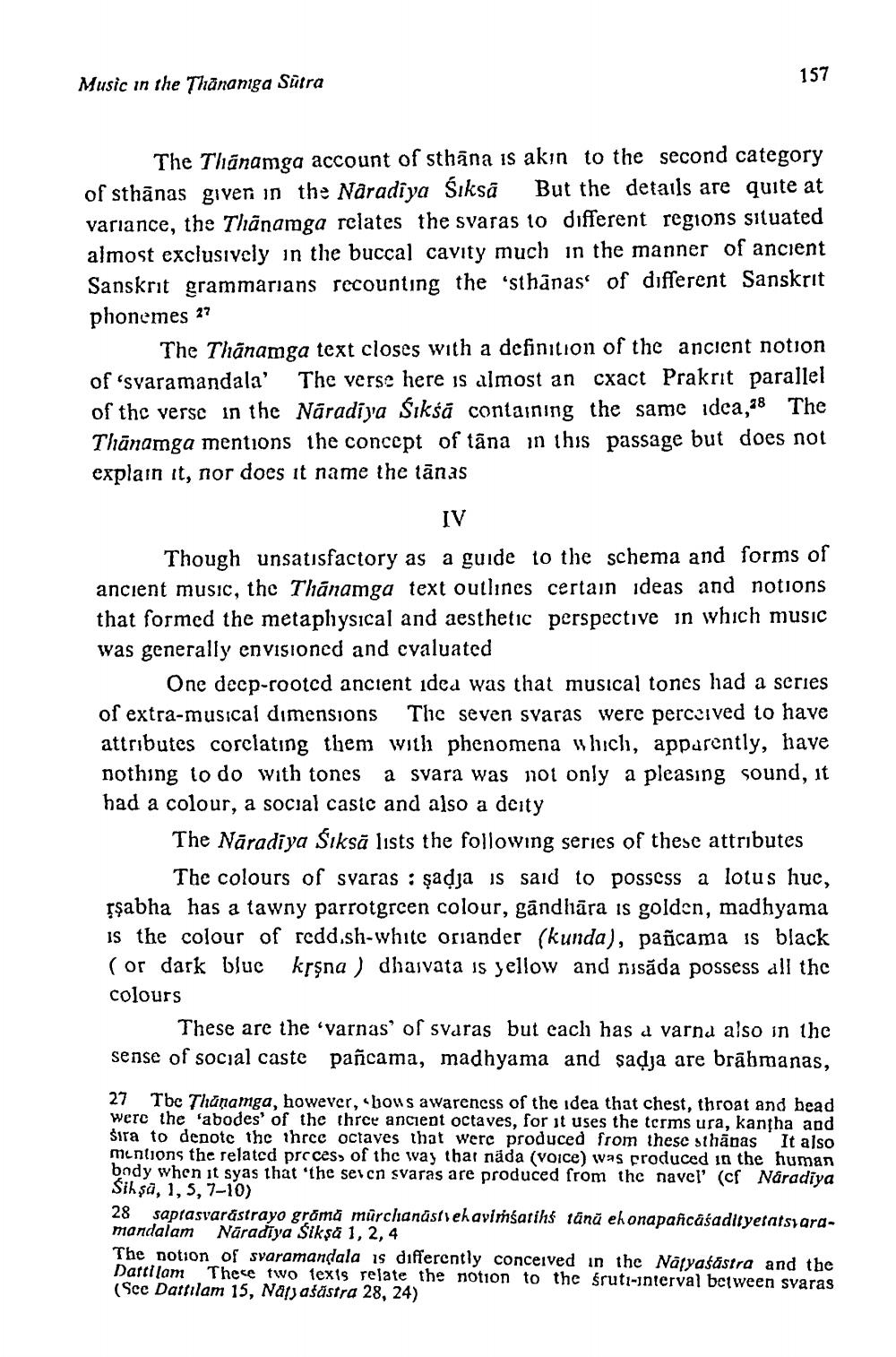________________
157
Music in the Thānanga Sutra
The Thanamga account of sthāna is akin to the second category of sthānas given in the Naradiya Siksā But the details are quite at variance, the Thanamga relates the svaras to different regions situated almost exclusively in the buccal cavity much in the manner of ancient Sanskrit grammarians recounting the 'sthānass of different Sanskrit phonemes 27
The Thanamga text closes with a definition of the ancient notion of 'syaramandala' The verse here is almost an cxact Prakrit parallel of the verse in the Náradiya Sıkšā containing the same idea,38 The Thānamga mentions the concept of tâna in this passage but does not explain it, nor does it name the tānas
IV
Though unsatisfactory as a guide to the schema and forms of ancient music, the Thānamga text outlines certain ideas and notions that formed the metaphysical and aesthetic perspective in which music was generally envisioned and cvaluated
One deep-rooted ancient idea was that musical tones had a series of extra-musical dimensions The seven svaras were perceived to have attributes corelating them with phenomena which, apparently, have nothing to do with tones a svara was 101 only a pleasing sound, it had a colour, a social casic and also a deity
The Nāradiya Siksā lists the following series of these attributes
The colours of svaras : sadja is said to possess a lotus huc, Isabha has a tawny parrotgreen colour, gândhāra is golden, madhyama is the colour of redd.sh-white oriander (kunda), pañcama is black (or dark blue krşna) dhaivata is yellow and sisāda possess all the colours
These are the 'varnas' or svaras but each has a varnd also in the sense of social caste pañcama, madhyama and sadja are brābmanas,
27 Tbc Thanamga, however, bous awareness of the idea that chest, throat and head were the abodes' of the three ancient octaves, for it uses the terms ura, kantha and sira to denotc the three octaves that were produced from these sthānas It also mentions the related process of the way that näda (voice) was produced in the human body when it syas that 'the seven svaras are produced from the navel' (cf Naradiya Sih sa, 1, 5, 7-10) 28 saprasvarastrayo grama mürchanástiekavimśarihs tänä ehonapañcâsadilyeratsyaramandalam Náradiya Sikşa 1, 2,4 The notion of svaramandala is differently conceived in the Nafyasastra and the Dartilam These two texts relate the notion to the śruti-interval between svaras (Scc Dathlam 15, Najaśăstra 28, 24)




